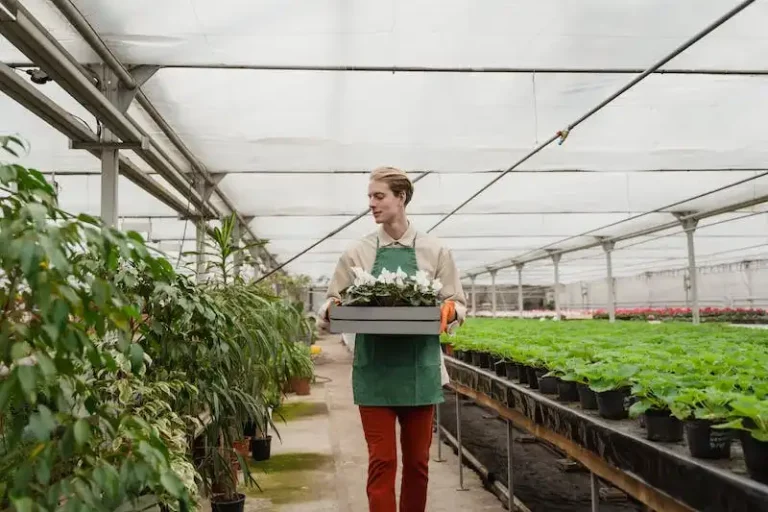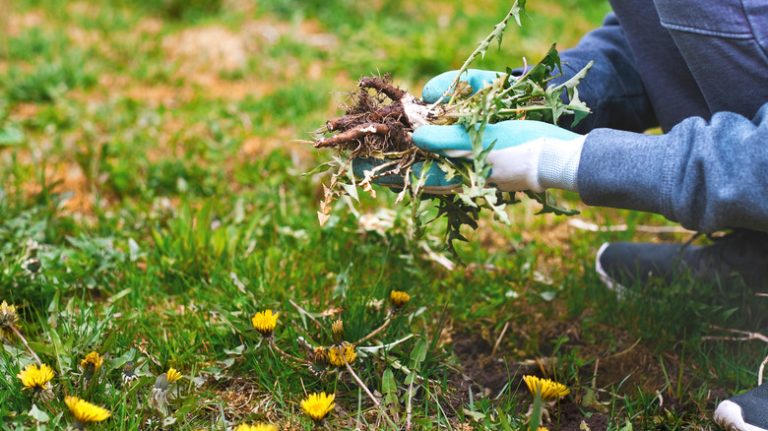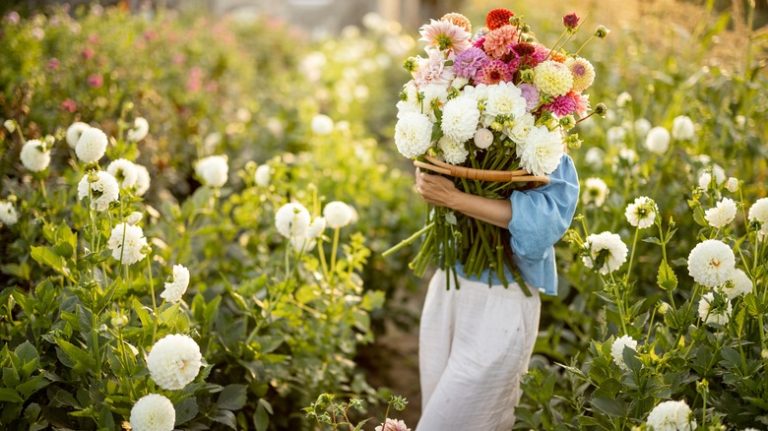Daffodils are popular spring-blooming flowers that come in a variety of colors and shapes. These bright and cheerful flowers can multiply and produce plenty of blooms when cared for properly. Daffodils are easy to grow, making them a favorite among gardeners. They are known for their long-lasting flowers that can bloom from late winter to early spring.
When it comes to planting daffodils, timing is everything. Most gardeners plant their bulbs in the fall, allowing them to establish roots before the cold winter weather sets in. Daffodils prefer a sunny location but can also tolerate some shade. They are a common sight in gardens, as they are known to naturalize and come back year after year.
One well-known variety of daffodil is the ‘Jessie’, which is a late-spring bloomer with bright yellow flowers. This variety is popular among gardeners for its reliable performance and vibrant color. Another popular variety is the ‘Keith’, which is an early bloomer that produces small, delicate flowers. No matter which variety you choose, daffodils are sure to add a touch of beauty to your garden.
When daffodils start to emerge, it is important to provide them with adequate care. Make sure to leave the leaves on the plant until they turn yellow and wither, as this allows the bulbs to store energy for the next growing season. After the leaves have died back, you can remove them. Daffodils are relatively low-maintenance plants, but it is always better to follow a planting guide to ensure their success.
If you haven’t planted daffodils yet, don’t worry! There is still time to plant them in the fall and enjoy their blooms in the spring. Just make sure to choose a location with well-draining soil and enough sunlight. Daffodils are known to thrive in a wide range of climates and can withstand freezing winters. So, whether you are planning to plant them in your garden or in containers, daffodils are a great choice for adding color to your spring landscape.
“Daffodils are the stars of the spring garden. They are easy to grow and always make me smile when they come up every year.” – mydaffodilsguide.com
In conclusion, daffodils are a beautiful and easy-to-grow flower that blooms in the spring. They come in a variety of colors and shapes, allowing you to create a stunning display in your garden. By planting the bulbs in the fall and providing them with proper care, you can expect plenty of blooms and a successful daffodil season.
When Do Daffodils Come Up in Spring
Daffodils are a popular flowering plant that typically blooms in the spring. They are known for their vibrant yellow and white flowers that emerge towards the end of winter and beginning of spring. If you live in an area with adequate sunlight and moderate winters, you can expect your daffodils to come up in early spring.
Daffodils grow from bulbs, which multiply over time. If you plant daffodil bulbs in the fall, they will spend the winter underground, and begin to emerge as the weather warms up in spring. The exact timing may vary depending on your zone and the specific variety of daffodils you have planted.
When planting daffodil bulbs, it’s important to ensure they are given proper care. Daffodils need well-draining soil and should be planted about two to three times as deep as the bulb’s height. They also prefer full sun but can tolerate some shade.
Once your daffodils start to come up, it is important to continue caring for them to ensure their success. Water them regularly, especially during dry spells, and fertilize them with a bulb-specific fertilizer. You should also leave the leaves of the plant until they turn yellow, as this allows the bulb to store energy for the following year’s blooms.
Keith, a daffodil expert, suggests that if you haven’t planted daffodils before, they are very easy to grow. They are a low-maintenance plant that can thrive in various climates. However, certain varieties may be more suitable for specific regions, so it’s always a good idea to consult a gardening guide or local expert to find the best daffodils for your area.
In conclusion, daffodils are a beautiful and easy-to-grow plant that brings a cheerful touch to any garden. With the right planting and care, you can expect their vibrant blooms to emerge in the spring, adding color and life to your outdoor space.
Daffodil Bloom Times
Daffodils, also known as Narcissus, are beautiful spring-blooming flowers that come in a variety of colors and sizes. If you are planning to plant daffodils, it is important to know when they bloom so you can enjoy their vibrant blooms at the right time.
The bloom time of daffodils generally depends on the variety and the conditions in which they are grown. Daffodils grow from bulbs, and they typically start blooming in early spring, usually in March. However, the exact bloom time may vary depending on your location and the weather conditions.
When daffodils begin to bloom, you will notice their long, slender stems with bright flowers at the top. The leaves of the daffodil emerge before the flower, creating a beautiful foliage backdrop. This foliage is important for the plant’s success as it helps produce energy for the bulbs.
It’s essential to know when the daffodil foliage emerges because it can affect the timing of other gardening tasks, such as planting new bulbs or dividing existing ones. After the daffodils have finished blooming, it’s important to let the foliage die back naturally. This process takes several weeks and helps the bulbs store up energy for the following year’s bloom.
While it may be tempting to remove the foliage once the flowers fade, it’s crucial to resist the urge. Removing the foliage prematurely can result in weaker bulbs and fewer blooms in the future. To ensure your daffodils bloom to their highest potential, make sure to provide them with adequate time to store energy through their foliage.
Some daffodil varieties, also known as late-spring bloomers, have a longer bloom time than others. These varieties can extend the daffodil season and provide gardeners with beautiful blooms well into late spring.
Caring for daffodils is relatively easy. Plant the bulbs in the fall, ideally before the first freezing temperatures. Daffodils prefer well-drained soil and partial to full sunlight. Water them regularly during the growing season, but be cautious not to overwater, as daffodils don’t like to sit in waterlogged soil.
In conclusion, knowing when daffodils bloom is essential for planning and enjoying their vibrant flowers. By following this guide and caring for your daffodils properly, you can ensure a beautiful display of blooms year after year. Enjoy the arrival of spring with these cheerful and resilient flowers!
About Jessie Keith
Jessie Keith is a gardening enthusiast with a passion for helping others cultivate beautiful and thriving gardens. She understands the importance of weather conditions when it comes to the blooming of daffodils and is well-versed in the various factors that can affect their growth.
If you’re wondering when daffodils bloom, Jessie can provide the answers. She knows that daffodils typically bloom in early spring, starting in March and lasting through April and May, depending on the weather and the specific variety of daffodil. The timing may differ from region to region, with colder areas typically experiencing a later bloom due to freezing temperatures.
To ensure healthy daffodil blooms, Jessie recommends planting the bulbs in the fall, six to eight weeks before the ground freezes. It’s important to properly prepare the soil by digging a hole that is about three times the depth of the bulb and placing the bulb with the pointed end facing up and the roots facing down. Planting daffodil bulbs in shallow holes can cause the bulbs to dry out, so a deeper hole is better to ensure success.
Jessie has years of experience caring for daffodils and knows how to reply to common challenges. For example, if your daffodils produce plenty of foliage but no flowers, it could be a sign that they are not getting enough sunlight. Daffodils prefer full sun but can tolerate partial shade. If your neighbors have shade trees that are blocking the sun, you may need to consider planting your daffodils in a different location.
When it comes to planning and planting daffodils, Jessie recommends considering how they will coexist with other plants in your garden. Daffodils are early bloomers and their foliage lasts longer than the flowers, so it’s important to choose companion plants that will provide visual interest once the daffodils have finished blooming. Some popular choices include tulips, hyacinths, and pansies.
Jessie’s success with daffodils has led her to publish a variety of gardening guides, where you can find more tips and advice on caring for these beautiful flowers. She knows that daffodils are generally easy to grow and require minimal maintenance. Once planted, they will come back year after year and may even multiply. However, if your daffodils become overcrowded, it may be necessary to divide them every few years to ensure continued flowering.
In summary, if you’re looking to add a touch of beauty to your garden, daffodils are a great choice. With Jessie Keith as your guide, you can learn all you need to know about when and how to plant daffodil bulbs, ensuring a stunning display of flowers come spring.
Leave a Reply Cancel reply
If you have any questions or need more information about when daffodils bloom, feel free to leave a comment below. Jessie, our guide to daffodil care, will be happy to assist you with any queries you may have. Whether you’re a seasoned gardener or just starting out, she can provide you with the guidance you need.
Daffodils are known to be shallow bloomers, meaning their bulbs need to be planted closer to the front of the bed or garden to ensure they receive adequate sunlight. They typically begin to emerge in late winter or early spring, with their foliage appearing first and the beautiful flowers following soon after. For gardeners in colder zones, daffodils may take a bit longer to bloom, but they are definitely worth the wait.
When caring for daffodils, it’s important to know that they prefer full sun or light shade. Planting them in a variety of locations can help stagger their bloom times, providing you with continuous blooms throughout the spring season. Daffodils can handle a range of soil types, but prefer well-draining soil, so be sure to incorporate organic matter into the soil when planting.
One of the most common questions gardeners have is when to expect daffodils to bloom. The answer can vary depending on the variety you have planted, but in general, daffodils bloom in early to mid-spring. Keith, another knowledgeable gardener in our guide, suggests that you can start to see the first daffodil blooms as early as March, but it can be different for each region and gardening zone.
If you haven’t planted daffodils yet, don’t worry! You can still plan for future blooms by storing the bulbs in a cool, dark place until you are ready to plant them. Daffodils are easy to grow and can provide beautiful blooms for many years to come, so it’s never too late to start planning your daffodil garden.
So, if you have any questions or if there’s anything else you’d like to know about daffodils, feel free to leave a comment below. Our gardening experts and fellow readers will be more than happy to share their knowledge and experiences with you. Let’s help each other create stunning daffodil displays within our gardens!



